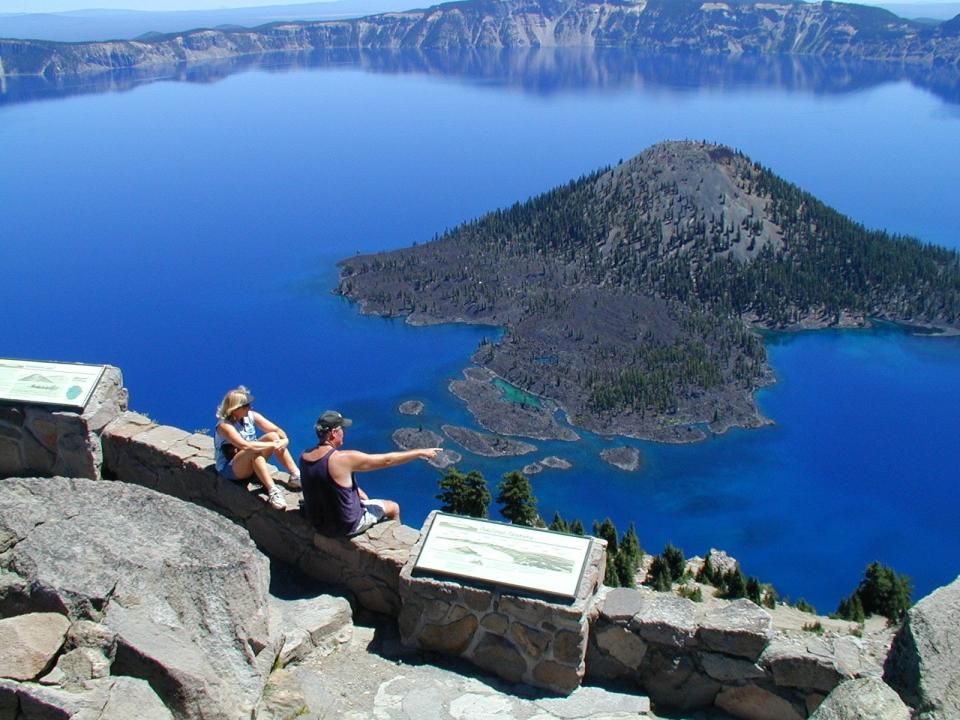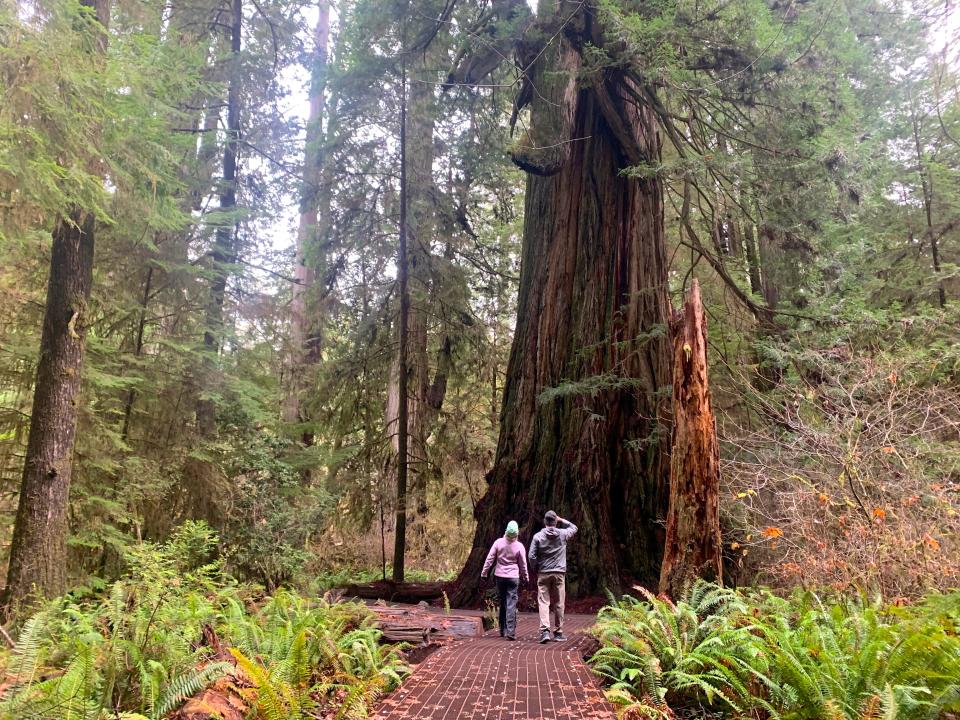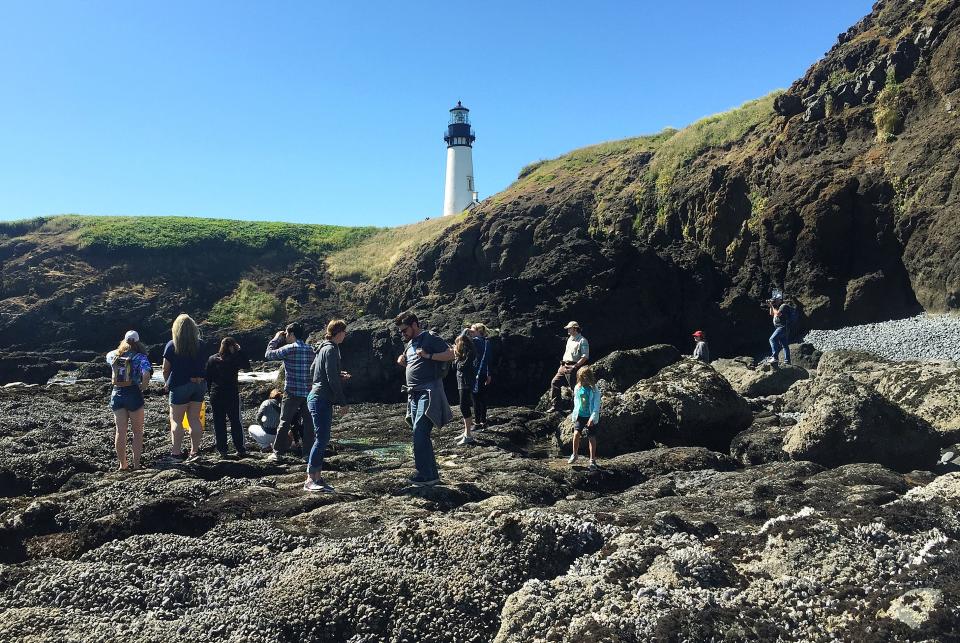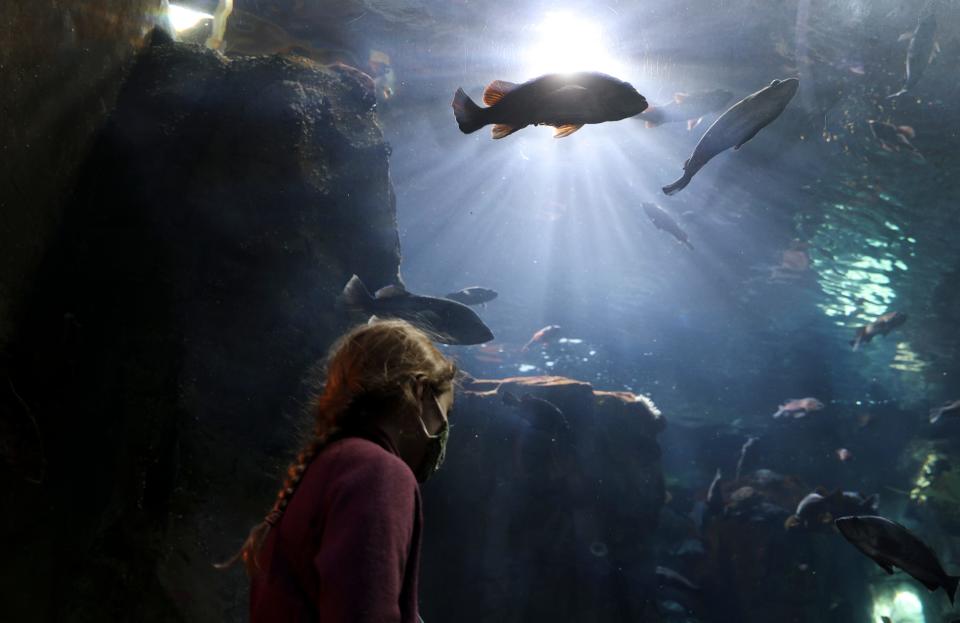5 summer Oregon road trips explore mountains, desert, coast and ancient forest
Rugged ocean coast. Towering mountains. Sweeping desert. The deepest lake in the United States and the world's tallest species of tree.
There really is nothing that Oregon doesn’t have when it comes to natural beauty and outdoor recreation.
With rising airfare and gasoline prices, many of us may choose to vacation closer to home.
Where to start? The Beaver State is vast, and with so many different landscapes to explore, it can seem overwhelming. We’ve got you covered with five ideas for road trips that take you to each of those diverse places, including a mix of well-loved gems and overlooked destinations.
Here are five road trip ideas in Oregon that cover each of the state’s unique landscapes — ocean, mountains, forest, volcanoes and desert.
Crater Lake National Park

Once a 14,000-foot volcano, an eruption that shook the Northwest over 7,000 years ago created the deepest and one of the clearest lakes in the United States in Oregon’s southern Cascade Range.
Today, visiting the collapsed volcano and Oregon’s only national park does require some solid planning due to its remote location and busy crowds seen in recent years.
First off is lodging and a base camp. There is a large campground and lodge at the park itself, but one option I’ve always enjoyed is staying outside the park at Union Creek, a rustic collection of cabins set amid emerald forest about a half-hour’s drive from the park, or nearby campgrounds such as Farewell Bend, Natural Bridge and River Bridge campgrounds.
At the park itself, this year marks the return of boat tours on Crater Lake itself, after a two-year hiatus, which is always worthwhile, especially if you choose the option of getting dropped off at Wizard Island for the afternoon. Make sure to buy boat tour tickets in advance.
Beyond that, hikes are the best way to explore the edges of the volcano. Cleetwood Cove Trail is the only way to reach the lake’s shoreline, where you are allowed to swim (it’s extremely cold). Hiking to the park’s highest point, Mount Scott, is the way to see the entire sweep of the lake from overhead.
Make sure to check the website, call or plan ahead, as this year’s late-season snow and road repairs will limit options on the East Rim Drive well into July. The park’s normal visitor’s center is also undergoing renovations and closed in 2022.
If you road-trip to Crater Lake from Salem, make sure to stop for waterfalls on your way across Highway 58 at Willamette Pass (Salt Creek Falls) or through Highway 138 and the North Umpqua Canyon (visit Tokatee Falls, Watson Falls and Fall Creek Falls).
Info: Website: https://www.nps.gov/; Phone: 541-594-3000
Wallowa Mountains and Eagle Cap Wilderness
While Oregon’s volcanoes such as Mount Hood and the Three Sisters are the state’s best-known mountains, the best alpine adventures are actually found in the state’s northeast corner.
The Wallowa Mountains and Eagle Cap Wilderness, about 90 minutes from La Grande and Interstate 84, offer a wonderful combination of touristy towns.
If you’re traveling with a family and want the more family-friendly adventure, find a vacation rental or stay at Wallowa Lake State Park. Surrounded by 9,000-foot mountains, Wallowa Lake is a chilly but fun recreation spot where you can fish, boat, hike and visit landmarks that speak to the area’s deep indigenous history.
The nearby towns of Joseph and Enterprise feature loads of great restaurants and local artwork.
If you want quieter camping — and a less touristy experience — consider the many smaller and more rustic Forest Service campgrounds that dot the surrounding area.
For a wilder adventure, backpack into the Eagle Cap Wilderness, a landscape of 361,446 acres of alpine lakes, high mountains and wildflower meadows. The most popular trailhead is at Wallowa Lake, which accesses the iconic lakes basin and scramble climbs up towering peaks like the Matterhorn and Eagle Cap.

The southern Eagle Cap is a likewise glorious area but with far fewer people.
Info: Wallowa Lake State Park website: https://stateparks.oregon.gov/index.cfm?do=park.profile&parkId=20; Phone: 541-432-4185. U.S. Forest Service Wallowa Mountains office numbers, 541-426-5546, 541-426-4978.
Redwoods and scenic coast along the Oregon-California border

One of my favorite places to explore in the United States is the giant trees and stunning coast on the remote coast of southwest Oregon and extreme northwest California.
The area features giant hikes in giant redwood territory, river adventures and quite possibly the most beautiful stretch of the Oregon Coast.
Base camp works in either Brookings or Crescent City, California, or in the numerous surrounding campgrounds from the large ones (Harris Beach State Park) to the quiet ones (Loeb State Park).
On the Oregon side, hike the stunning Samuel Boardman State Scenic Corridor, home to numerous pullouts and short hikes to what many consider the most scenic stretch of the Oregon Coast. Find sweeping views and drop down to secret beaches.
Up next are redwood hikes. The Oregon side has two quieter strolls among the giants at Oregon Redwoods Trail and Redwood Nature Loop. The biggest trees, however, are just across the border in California’s Jedediah Smith Redwoods State Park. It gets busy in the summer but the redwoods are second to none, especially with the opening of the Grove of the Titans Trail. I’d sneak down early on a weekday.
Info: Harris Beach / Boardman state park numbers, 541-469-0224; Boardman Corridor map: https://stateparks.oregon.gov/index.cfm?do=main.loadFile&load=_siteFiles%2Fpublications%2F%2F45470_OPRD_Boardman_Brochure%28web%29081813.pdf
John Day Fossil Beds National Monument
Those who live outside Oregon and view the state as nothing but rain-soaked forest will be surprised to know just how much desert can be found in the Beaver State.
But Oregon does have a ton of dry landscapes worth checking out, and that probably begins with the John Day Fossil Beds National Monument. Best-known for its Painted Hills unit, which features color-streaked hillsides, the monument also features the Thomas Condon Paleontology Center, which documents the area’s many fossils and animals uncovered at what was once a prehistoric lake.
There are numerous small towns with bed and breakfast style accommodations, along with fun places like the Oregon Hotel and Ritter Hot Springs, which seem like the old west.
The three units of the monument are spaced about an hour apart each. The Painted Hills unit showcases a collection of short hikes in a relatively small area. The closest town is Mitchell and has most everything you’d need. A wilder experience can be had by climbing Sutton Mountain, which looms over the Painted Hills like a battleship.
The most developed area is the Sheep Rock unit, which has the visitor’s center. Blue Basin and Island in Time hikes are the most iconic hikes, but there’s a lot to explore in this area.
The Clarno unit is the least-visited but features dramatic cliffs at the spectacular Palisades, a nice picnic area with three easy trails to explore nearby.
Info: National monument website: https://www.nps.gov/joda. Phone: (541) 987-2333
Aquarium, breweries, tidepools and sandy beach in Newport

It’s tough to pick a favorite Oregon Coast town. Each is unique and brings something different to the table. My favorite overall — although it’s close — is Newport. The reason is simple: it’s a town that features all the sand, forest and ocean-going fun typical of the Coast, while adding benefits of being a larger town.
The biggest tourist attractions include the Oregon Coast Aquarium, which is well worth a visit despite being pricey, especially for kids who can watch sea otters streak below the surface, play peek-a-boo with an octopus and enter a glass walkway with fish and sharks swimming above, beside and below them. There are also lots of brew pubs and restaurants in the two historic districts at Nye Beach and Yaquina Bay.
Travel just north of town to Oregon’s tallest lighthouse — Yaquina Head — but stay at what’s deemed an “outstanding natural area” to explore the tidepools and cobble beach.
South Beach State Park offers the chance to camp, bike, hike or just lounge on the sand. And one fun trip is renting a fat-tire bike at Bike Newport and riding it on the sand. For old-growth forest, head to Mike Miller Educational Park, home to ancient trees on a nice little 40-acre preserve tucked into the south end of town.

Info: Travel Newport, https://traveloregon.com/places-to-go/cities/newport. Yaquina Head Outstanding Natural Area website, https://www.blm.gov/learn/interpretive-centers/yaquina; phone: (541) 574-3100.
Zach Urness has been an outdoors reporter in Oregon for 15 years and is host of the Explore Oregon Podcast. To support his work, subscribe to the Statesman Journal. Urness is the author of “Best Hikes with Kids: Oregon” and “Hiking Southern Oregon.” He can be reached at zurness@StatesmanJournal.com or (503) 399-6801. Find him on Twitter at @ZachsORoutdoors.
This article originally appeared on Salem Statesman Journal: Travel ideas: 5 Oregon road trips perfect for a 2022 summer staycation

